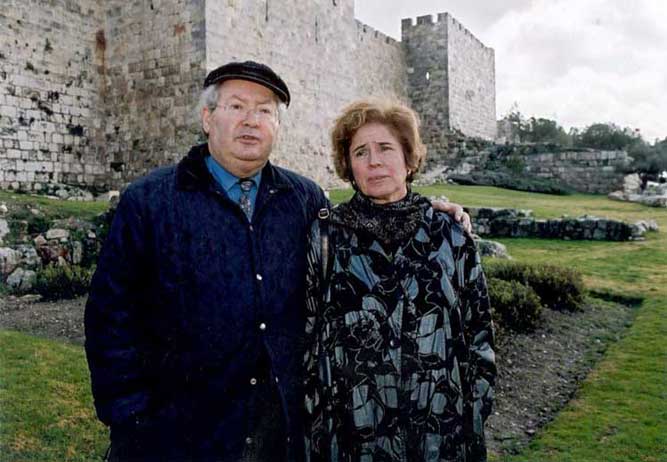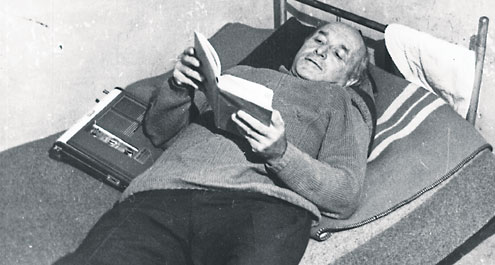We love to think that the bad guys always get caught and justice will prevail. Unfortunately that isn’t always the case and often the greater the crime the easier it is to get away with it. Below are some examples of some of the most evil War criminals that escaped justice.
Gerhard Sommer
Gerhard Sommer (born 24 June 1921) is a former SS-Untersturmführer (Second Lieutenant) in the 16th SS Panzergrenadier DivisionReichsführer-SS who was involved in the massacre of 560 civilians on 12 August 1944 in the Italian village of Sant’Anna di Stazzema.

Gerhard Sommer, a former company commander of a mechanized infantry division, had been accused over the Nazis’ mass murder of 560 civilians in the Tuscan mountain village of Sant’Anna di Stazzema in 1944.
On 12 August 1944, Nazi soldiers using machine guns and flamethrowers massacred almost all residents and refugees in Sant’Anna di Stazzema, including 107 children under 14 years.After decades of judicial inertia in Germany and Italy, the case resurfaced in the 1990s based on research by several historians.
In 2005, an Italian military court found that 10 members of the 16th SS “Reichsfuehrer” division, including Sommer, were personally responsible for the massacre and sentenced them to life in prison in absentia.
In 2002 investigations against Sommer were initiated in Germany, but no criminal charges have yet been brought. Gabriela Heinecke, a lawyer from Hamburg in charge of the “Nebenklage”(in addition to lawsuit) of the Italian survivors of the massacre continues to be denied access to the records by the German public prosecution department.As of May 2006 Sommer was living in a nursing home in Hamburg-Volksdorf, Germany. In May 2015, Sommer was declared unfit for trial by prosecutors in Germany.Sommer’s advanced state of dementia attested by experts meant that he would not have been able to address the court and merely a passive “object of public prosecution.”
Helmut Oberlander

Helmut Oberlander (born 15 February 1924) is a Canadian citizen who was a member of the Einsatzkommando. Since 1994, the Government of Canada has made repeated attempts to revoke Oberlander’s citizenship.
As an ethnic German born and living in Ukraine during World War II, he was conscripted into the German forces at the age of 17 to serve as an interpreter for the EK10A (Einsatzkommando) when they entered Soviet Ukraine in 1941. His duties included listening to and translating Russian radio transmissions, acting as an interpreter during interactions between the military and the local population, and the guarding of military supplies.
The Federal Court of Canada, in Oberlander v. Canada (Attorney General), determined that Oberlander was part of the Ek 10a during World War II.

The Federal Court of Canada characterized the group as a death squad, responsible for killing more than two million people, most of whom were civilians and largely Jewish. According to the ruling, from 1941 to 1943 Oberlander served with Ek 10a as an interpreter and an auxiliary. In addition to interpreting, he was tasked with finding and protecting food and polishing boots. He lived, ate, travelled and worked full time with the Ek 10a.From 1943 to 1944, he served as an infantryman in the German army.
Oberlander immigrated to Canada with his wife Margaret in 1954, where he ran a construction business and lived in Kitchener-Waterloo, Ontario. He became a Canadian citizen in 1960.In 1995 the Government of Canada initiated a de-naturalization and deportation process against him. On 28 February 2000, Judge Andrew MacKay reported his findings: he concluded that there is no evidence that Oberlander was involved, directly or indirectly, in committing any war crimes or any crimes against humanity. He might not have, however, disclosed his wartime record during his immigration interview in 1953 in Karlsruhe, Germany. The Government of Canada determined that withholding this information was sufficient reason to strip Oberlander of his Canadian Citizenship. Andrew Telegdi who was Oberlander’s Member of Parliament, and who was at the time parliamentary secretary to the Minister of Citizenship of Immigration, resigned from that position in objection to this decision.

In October 2008 the government revoked his citizenship.In November 2009 the Federal Court of Appeal struck down this decision thus reinstating his citizenship.
In 2012 Oberlander was again stripped of his citizenship through an Order in Council of the Government of Canada. Oberlander appealed the 2012 order to the Federal Court of Canada, which the court rejected in 2015. Oberlander then appealed the 2015 decision to the Canadian Federal Court of Appeal. In 2016 the court accepted his appeal, setting aside the government’s 2012 Order in Council.
The judge in the case said that there needed to be study of whether or not Oberlander was only cooperating with Nazis under duress, or out of fear of his life.On July 7 2016, the Supreme Court rejected a government appeal of that decision, meaning that Oberlander will — unless the government revokes it again — retain his Canadian passport.
Alois Brunner

Alois Brunner (8 April 1912 – c. 2010) was an Austrian Schutzstaffel (SS) officer who worked as Adolf Eichmann’s assistant. Eichmann referred to Brunner as his “best man.” Brunner is held responsible for sending over 100,000 European Jews to the gas chambers. He was commander of the Drancy internment camp outside Paris from June 1943 to August 1944, from which nearly 24,000 people were deported.
After some narrow escapes from the Allies in the immediate aftermath of World War II, Brunner fled West Germany in 1954, first for Egypt, then Syria, where he remained until his death. He was the object of many manhunts and investigations over the years by different groups, including the Simon Wiesenthal Center, the Klarsfelds and others. He was condemned to death in absentia in France in 1954 for crimes against humanity. He lost an eye and then the fingers of his left hand as a result of letter bombs sent to him in 1961 and 1980, possibly by the Israeli Mossad. The government of Syria under Hafez el-Assad came close to extraditing him to East Germany, before this plan was halted by the fall of the Berlin Wall in November 1989. Brunner survived all the attempts to detain him, unrepentant about his activities to the end.

SS captain Alois Brunner, described by Eichmann as his “best man,” was responsible for the deportation of 128,500 Jews to the death camps. After the war in the 1950s, Brunner fled to Syria where he reportedly served as a government adviser to president Hafez Assad and is thought to have instructed the regime on torture tactics.

He survived two Mossad assassination attempts, and went to his grave utterly “unrepentant,” according to Nazi hunter Efraim Zuroff.
In an interview with the German magazine Bunte, in 1985, Brunner described how he escaped capture by the Allies immediately after World War II. The identity of Brunner was apparently mixed up with that of another SS member, Anton Brunner, who was executed for war crimes, instead of Alois, who, like Josef Mengele, lacked the SS blood type tattoo, which prevented him from being detected in an Allied prison camp. Anton Brunner, who also worked in Vienna deporting Jews, was confused after the war with Alois Brunner.
After arriving in Syria under the pseudonym of Dr. Georg Fischer
On November 30, 2014, the Simon Wiesenthal Center reported receiving credible information that Brunner had died in Syria in 2010. He would have been 97 or 98. Partly due to the ongoing Syrian Civil War, the exact date of his death and place of burial are unknown at present.
According to the director of the Wiesenthal Center, Dr Efraim Zuroff, the information came from a “reliable” former German secret service agent who had served in the Middle East. The information was also widely reported in the press. The new evidence revealed that Brunner was buried in an unknown location in Damascus around 2010, unrepentant of his crimes to the end. Zuroff said that, owing to the civil war in Syria, the exact location of Brunner’s grave is impossible to know.
Aribert Heim
Aribert Ferdinand Heim (28 June 1914 – 10 August 1992)was an Austrian SS doctor, also known as Dr. Death. During World War II he served at the Mauthausen-Gusen concentration camp in Mauthausen, killing and torturing inmates by various methods, such as direct injections of toxic compounds into the hearts of his victims.
After the war, Heim lived for many years in Cairo, Egypt, under the alias of Tarek Farid Hussein, where he converted to Islam and died there on 10 August 1992 according to testimony by his son and lawyer. This information, though set forth by a German court, has been challenged.In 2009, a BBC documentary stated that German police had found no evidence of Heim’s death on their recent visit to Cairo;nevertheless, three years later, a court in Baden-Baden confirmed again that Heim had died in 1992, based on new evidence provided by his family and lawyer.
Aribert Heim worked in Mauthausen as a doctor starting in October 1941 at the age of 26, and he only worked there for six weeks.

The prisoners at Mauthausen called Heim “Dr. Death”, or the “Butcher of Mauthausen” for his cruelty He was known there for performing operations without anaesthesia. For about two months (October to December 1941), Heim was stationed at the Ebensee concentration camp near Linz (Austria),

where he carried out experiments on Jews and others similar to those performed at Auschwitz by Josef Mengele. According to Holocaust survivors, Jewish prisoners were poisoned with various injections directly into the heart, including petrol, phenol, available poisons or even water, to induce death.He is reported to have removed organs from living prisoners without anesthesia, killing hundreds.
After the war, Heim remained in Germany, working as a doctor at a gynaecological practice in Baden-Baden until 1962, when he went into hiding. In 1979, the public prosecutor’s office in Baden-Baden pressed charges against Heim and issued an international arrest warrant.
It is believed that Heim left Germany in 1963 using his second name Ferdinand and that he traveled to Egypt on a tourist visa. He then lived in hiding in Cairo for decades using the name. In 1980, he apparently converted to Islam and then assumed the name Tarek Hussein Farid. They believe he died at the age of 78 on Aug. 10, 1992 in Cairo.

























































You must be logged in to post a comment.